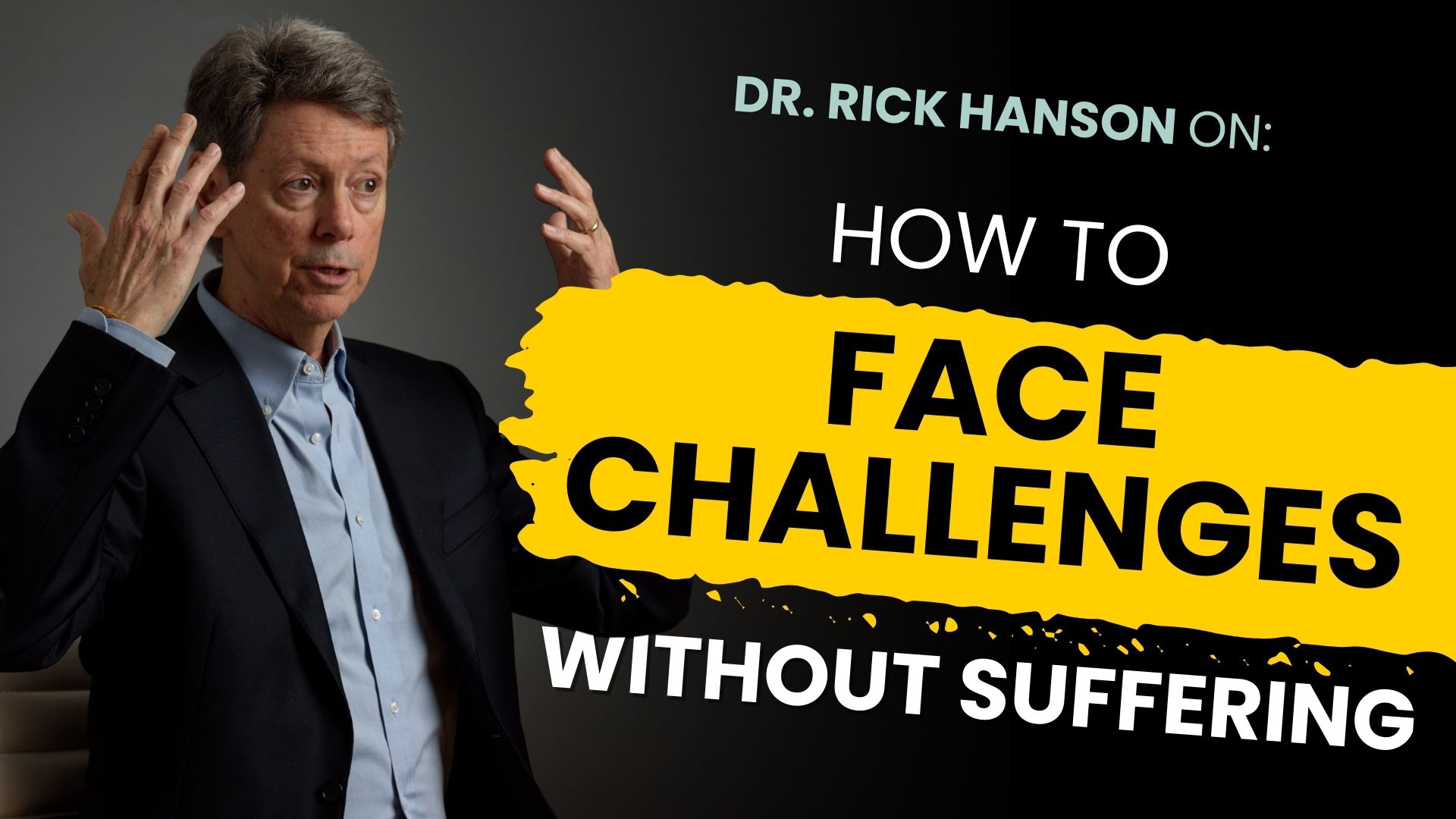To keep our ancestors alive, the brain evolved an ongoing internal trickle of unease. This little whisper of worry keeps you scanning your inner and outer worlds for signs of trouble.
This background of unsettledness and watchfulness is so automatic that you can forget it’s there. So see if you can tune in to a tension, guarding, or bracing in your body. Or a vigilance about your environment or other people. Or a block against completely relaxing, letting down, letting go. Try to walk through an office or store that you know is safe without a molecule of wariness: it’s really hard. Or try to sit at home for five minutes straight while feeling undefended, soft in your body, utterly comfortable in the moment as it is, at peace: this is impossible for most people.
The brain’s default setting of apprehensiveness is a great way to keep a monkey looking over its shoulder for something about to pounce. But it’s a crummy way to live. It wears down well-being, feeds anxiety and depression, and makes people play small in life.
And it’s based on a lie.
In effect, that uneasiness in the background is continually whispering in your mental “ear”: You’re not safe, you’re surrounded by threats, you can never afford to lower your guard.
But take a close look at this moment, right now. Probably, you are basically all right: no one is attacking you, you are not drowning, no bombs are falling, there is no crisis. It’s not perfect, but you’re okay.
By “right now,” I mean this moment. When we go into the future, we worry and plan. When we go into the past, we resent and regret. Threads of fear are woven into the mental tapestries of past and future. Look again at the thin slice of time that is the present. In this moment: Are you basically okay? Is breathing okay? Is the heart beating? Is the mind working? The answers are almost certainly yes.
In daily life, it’s possible to access this fundamental sense of all-rightness even while getting things done. You’re not ignoring real threats or issues, or pretending that everything is perfect. It’s not. But in the middle of everything, you can usually see that you’re actually all right right now.
My book Just One Thing offers the practice of Noting You’re All Right, Right Now – which you’ll find below – as well as 51 additional practices to change for the better.
How to Notice You’re All Right, Right Now
Several times a day, notice that you’re basically all right.
You may want more money or love, or simply ketchup for your French fries. Or want less pain, heartache, or rush hour traffic. All very reasonable. But meanwhile, underneath all the to-ing and fro-ing, you are okay. Underneath your desires and activities is an aliveness and an awareness that is doing fine this second.
There you are fixing dinner; notice that “I’m all right right now,” and perhaps say that softly in your mind. Or you’re driving: I’m all right right now. Or you’re talking with someone: I’m all right right now. Or doing e-mails or putting a child to bed: I’m all right right now.
Notice that, while feeling all right right now, you can still get things done and deal with problems. The fear that bad things will happen if you let yourself feel okay is unfounded; let this sink in. You do not need to fear feeling all right!
Sometimes you’re really not all right. Maybe something terrible has happened, or your body is very disturbed, or your mind is very upset. Do what you can at these times to ride out the storm. But as soon as possible, notice that the core of your being is okay, like the quiet place fifty feet underwater, beneath a hurricane howling above the sea.
Noticing that you’re actually all right right now is not laying a positive attitude over your life like a pretty veil. Instead, you are knowing a simple but profound fact: In this moment I am all right. You are sensing the truth in your body, deeper than fear, that it is breathing and living and okay. You are recognizing that your mind is functioning fine no matter how nutty and not-fine the contents swirling through it are.
Settling into this basic sense of okayness is a powerful way to build psychological resources and well-being. You’re taking a stand for the truth – and against the well-intended but deceptive biases of your own brain.




